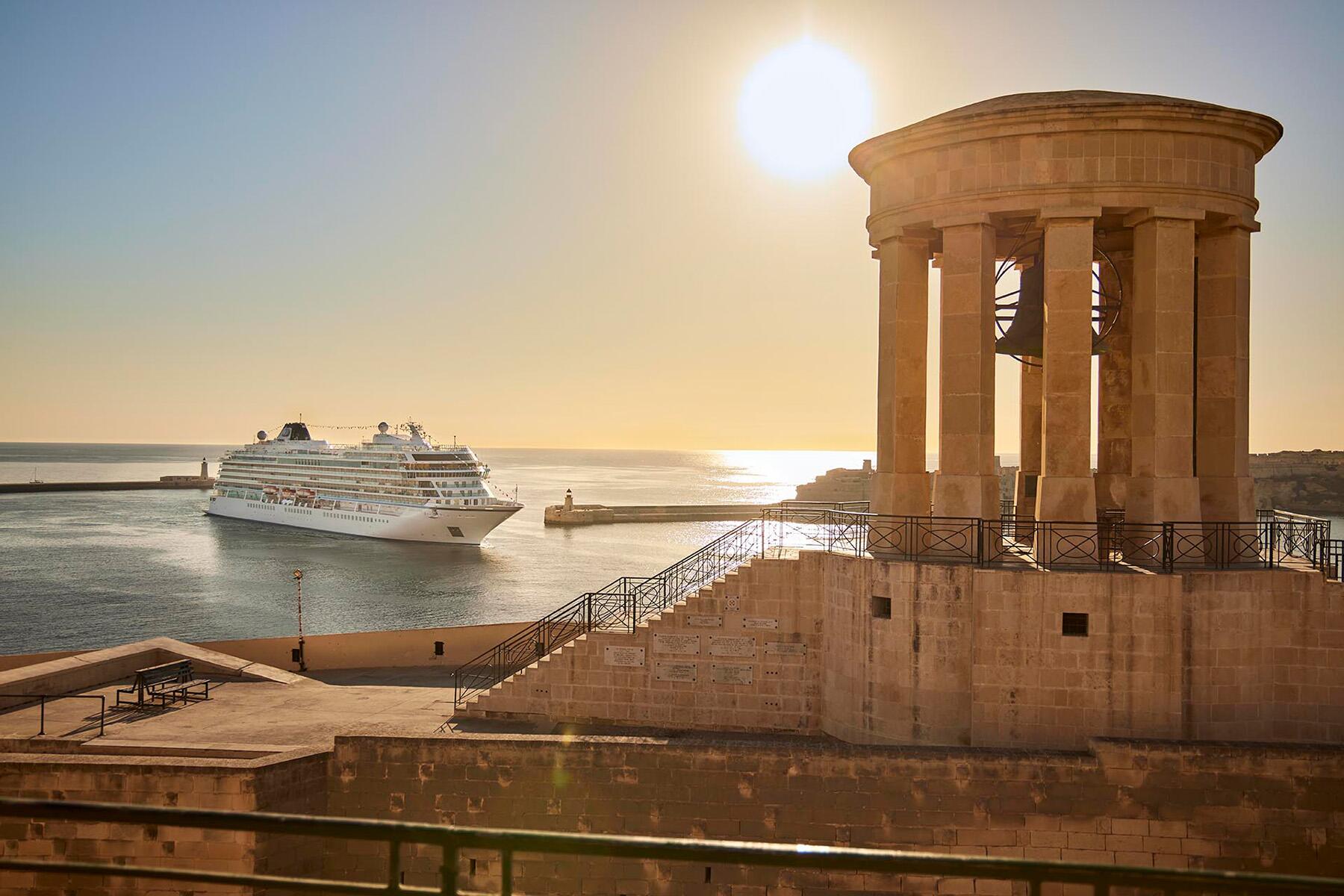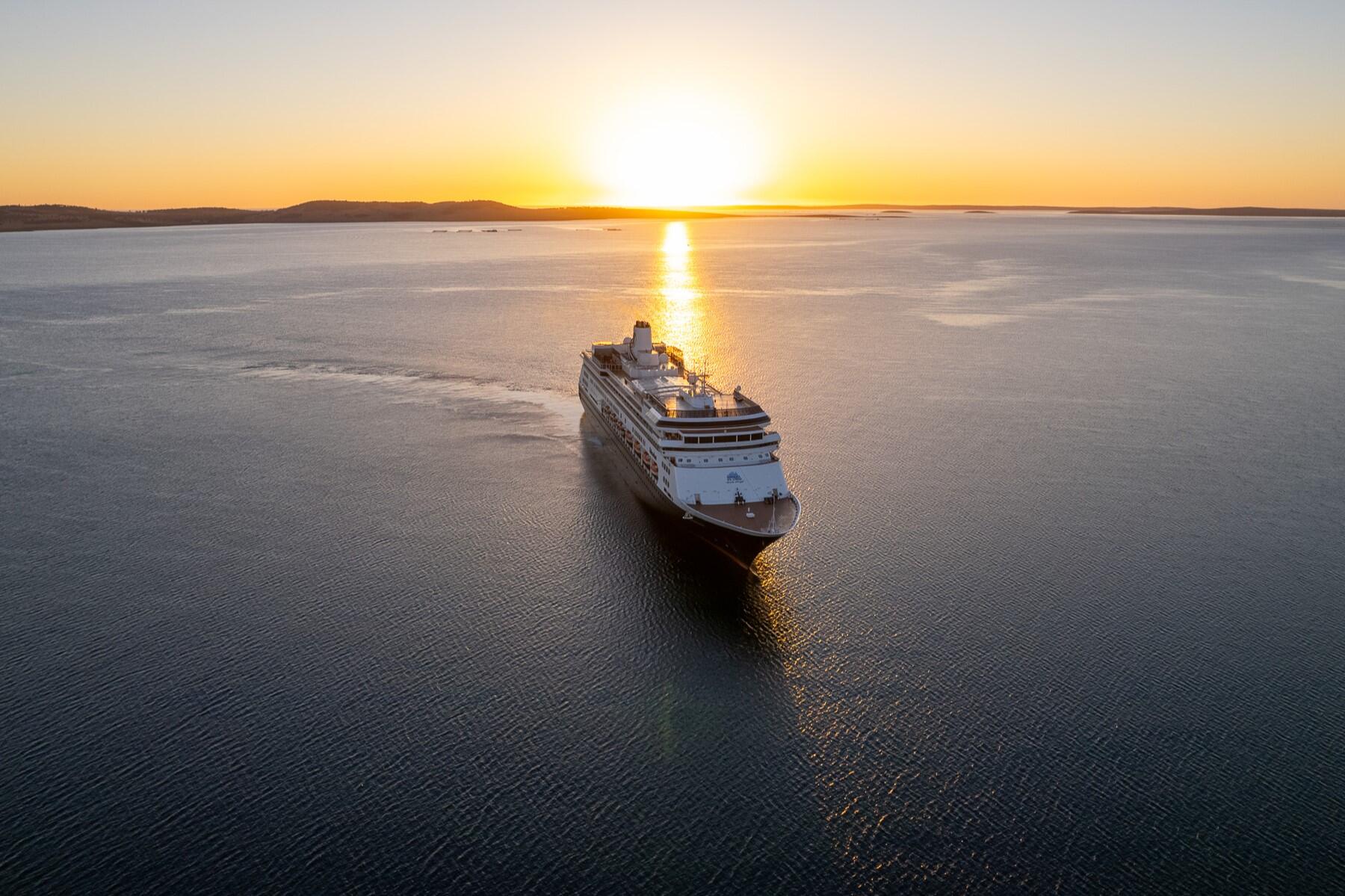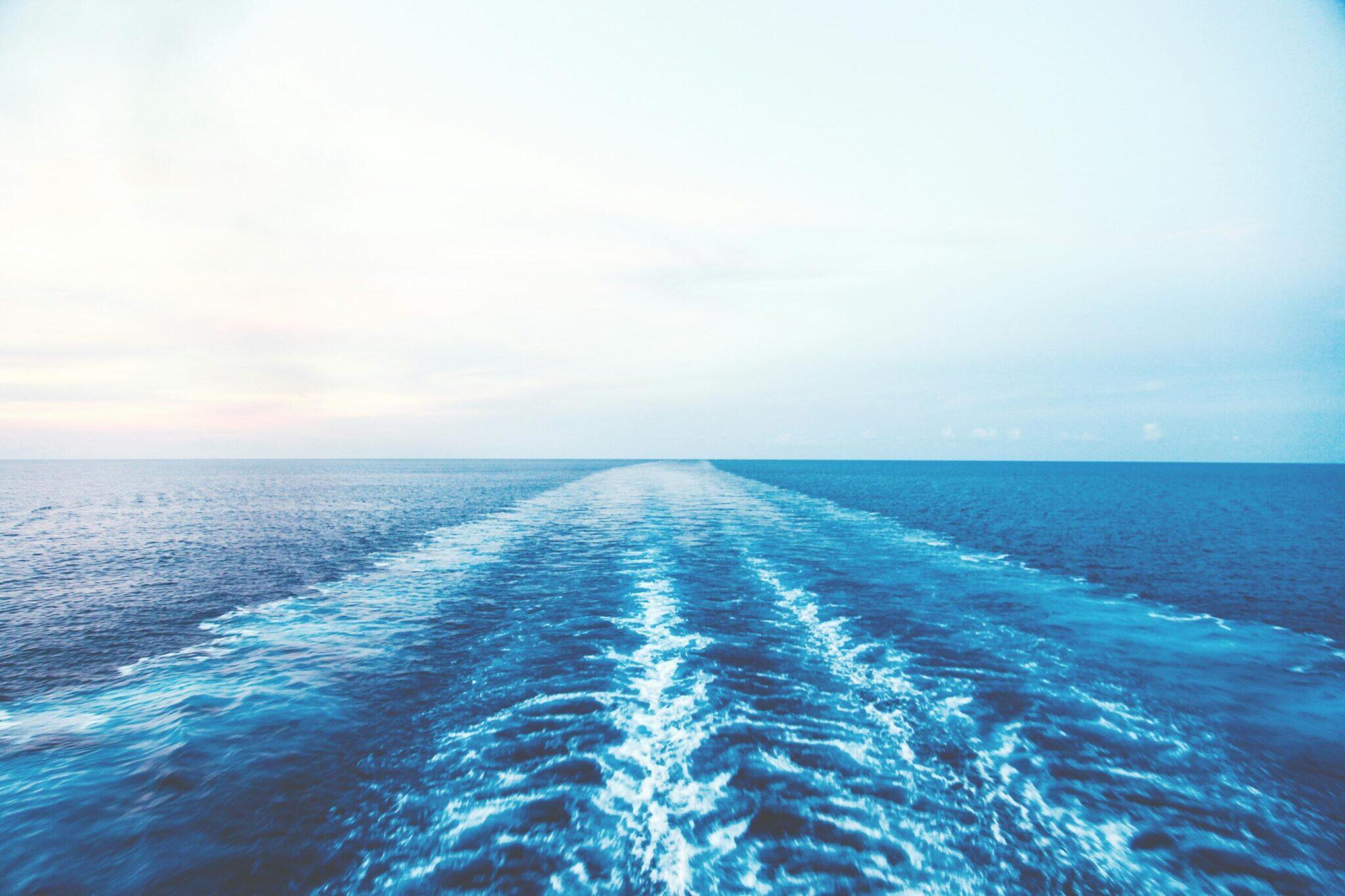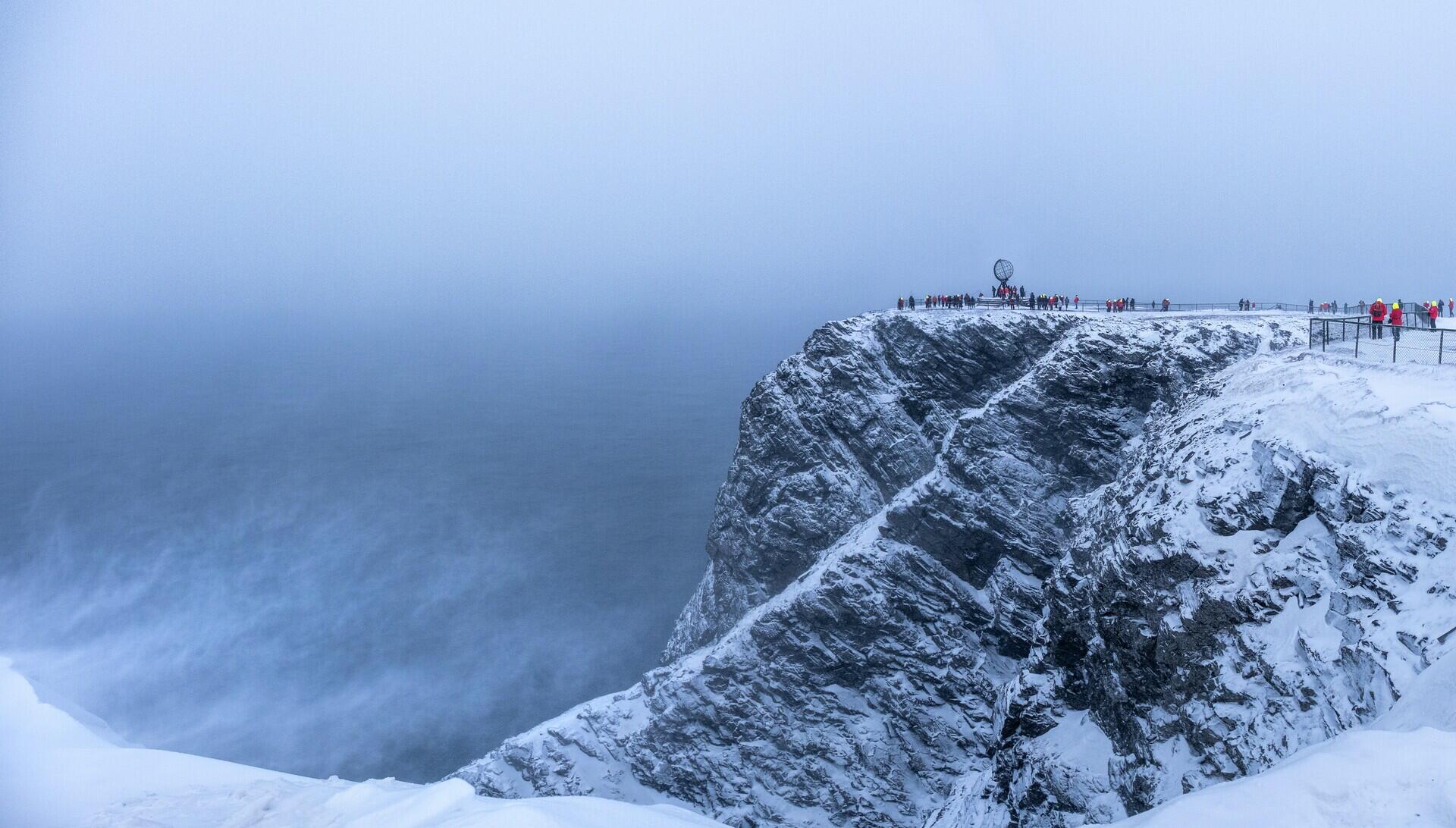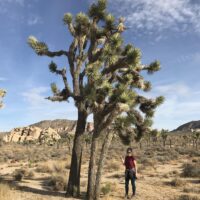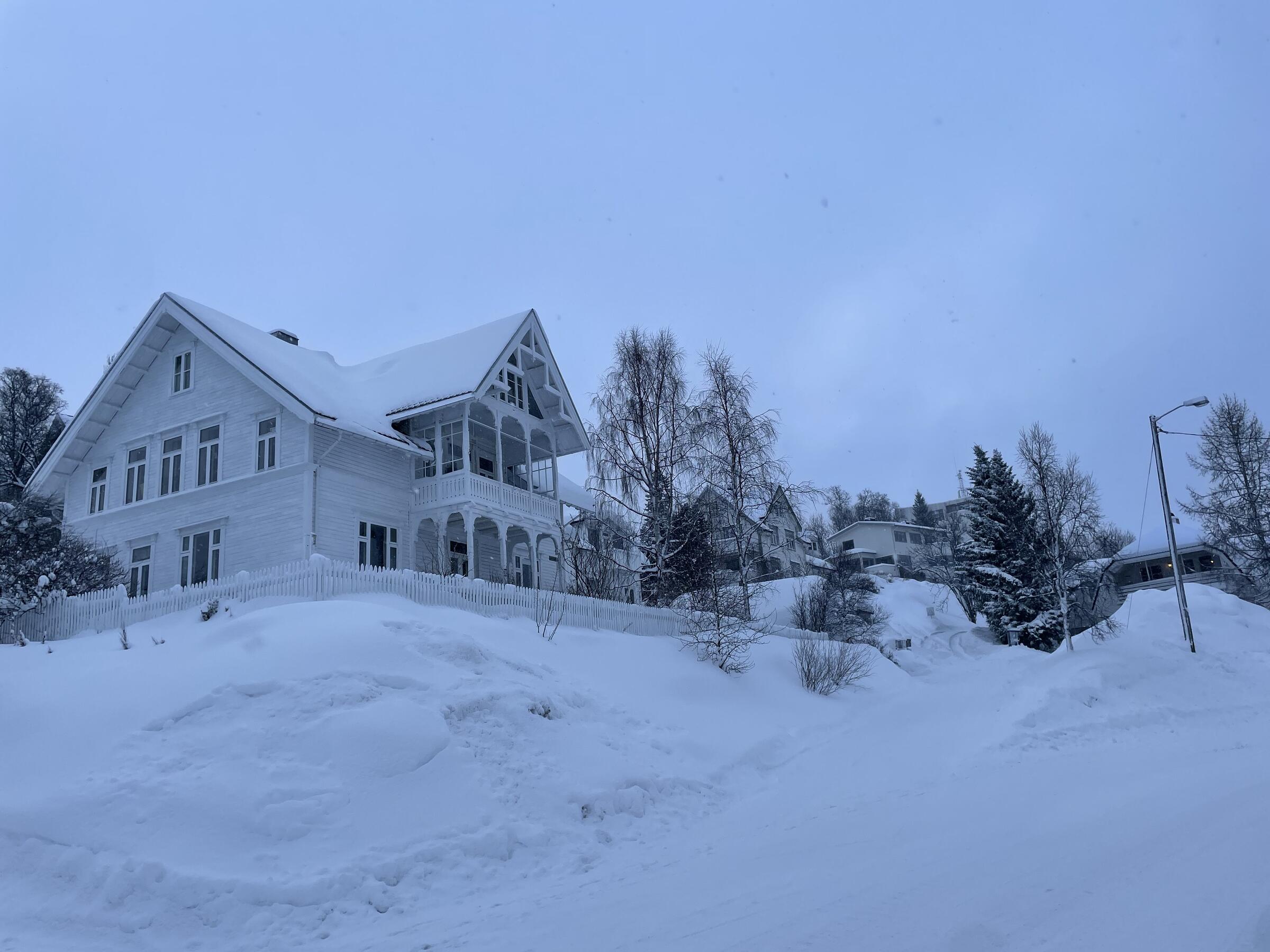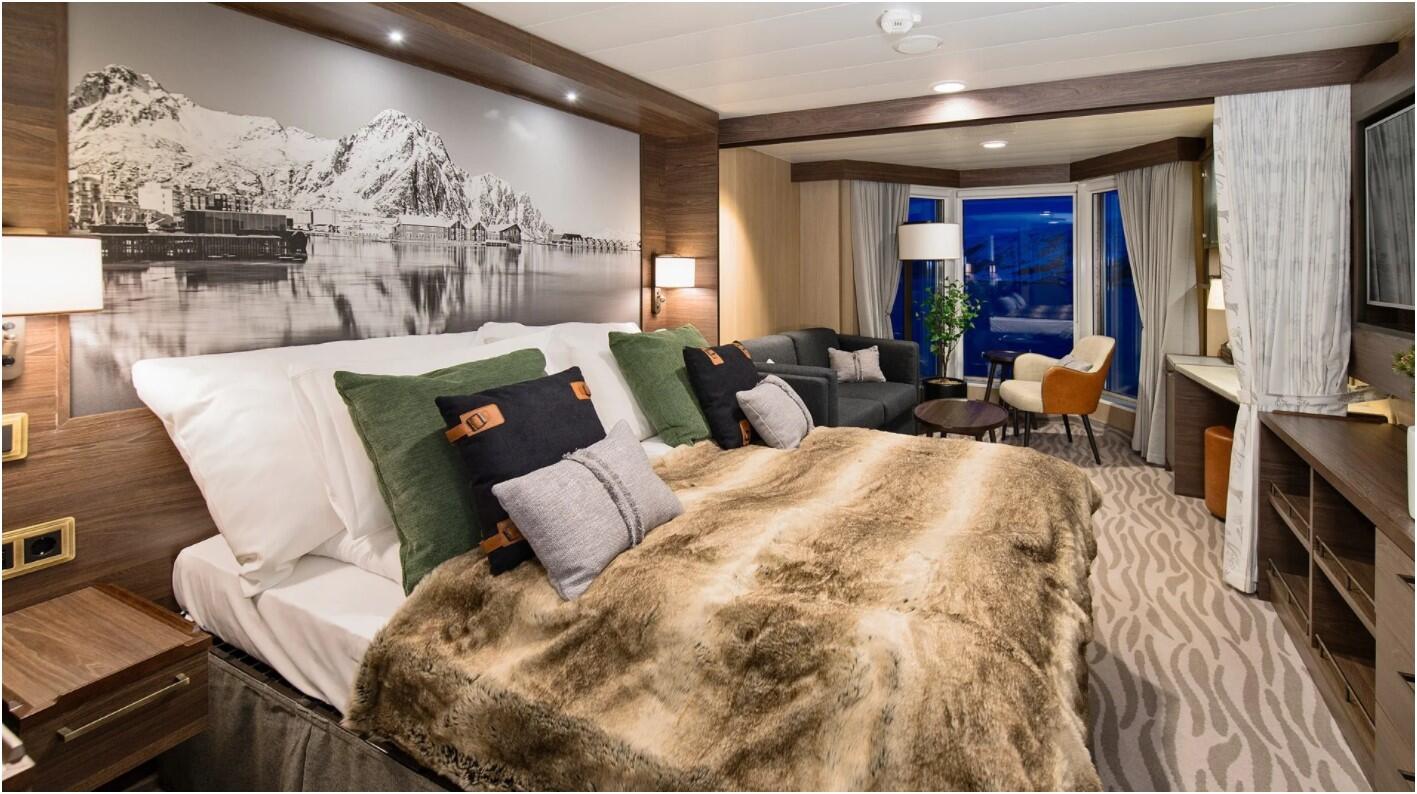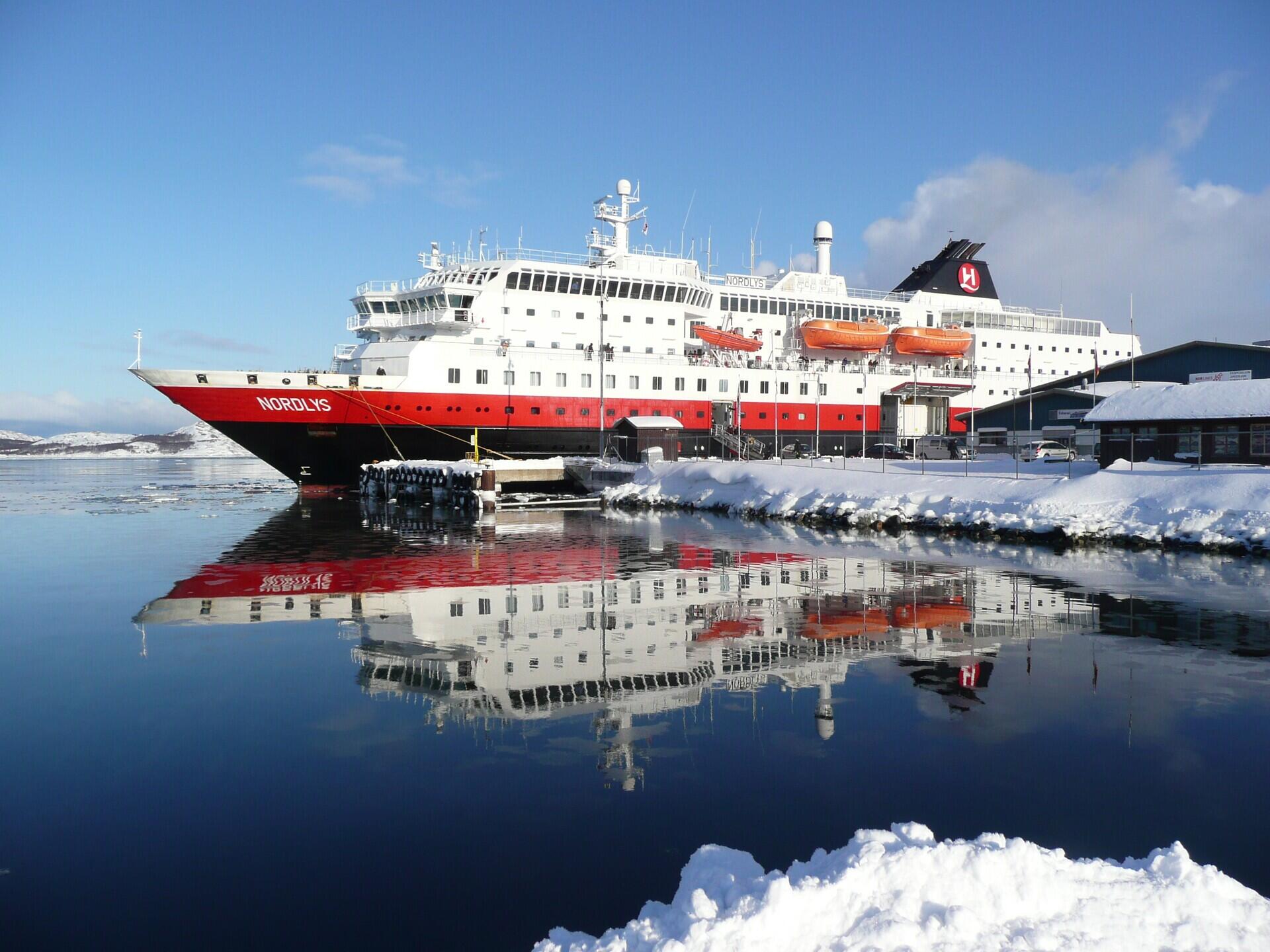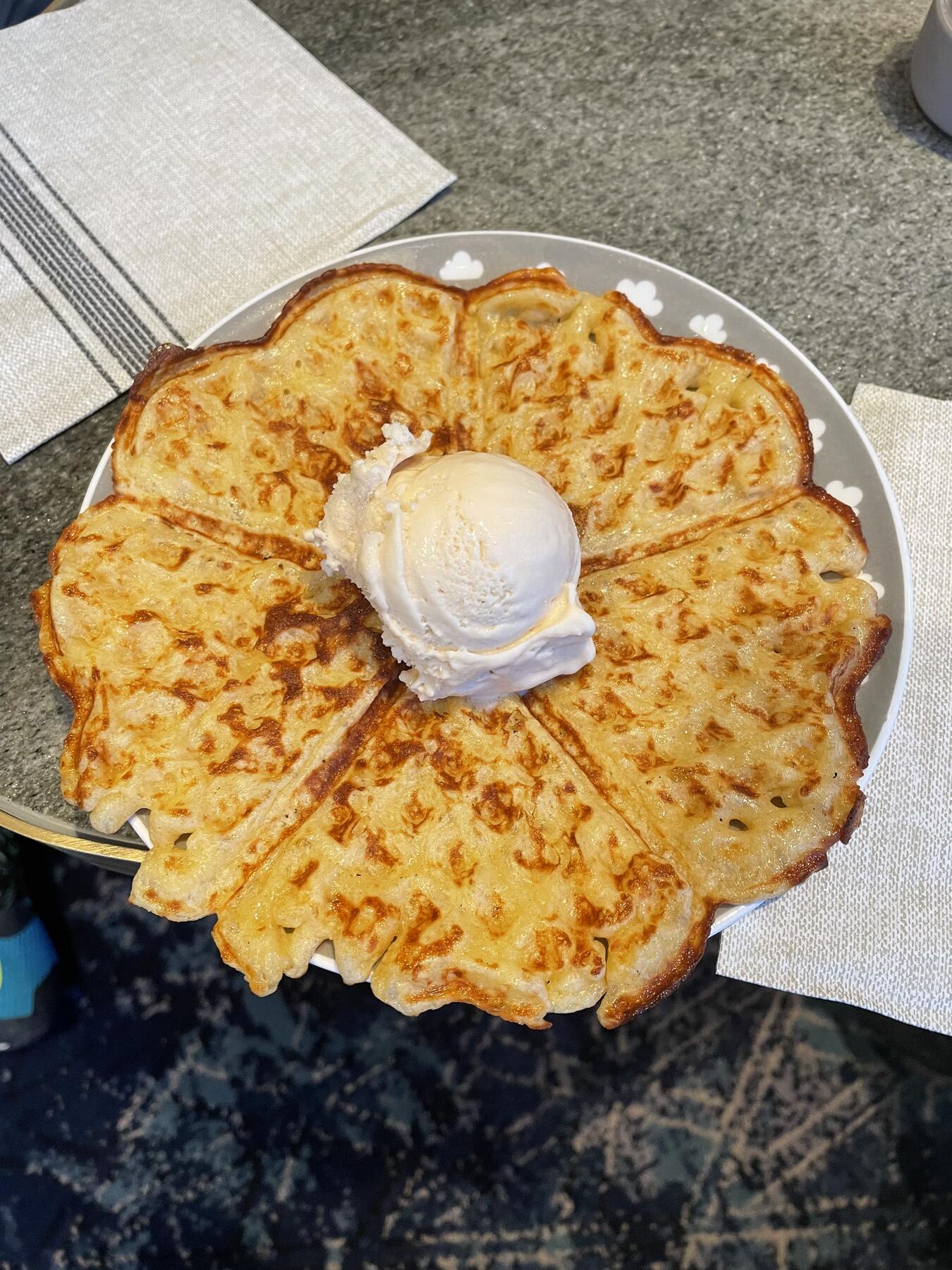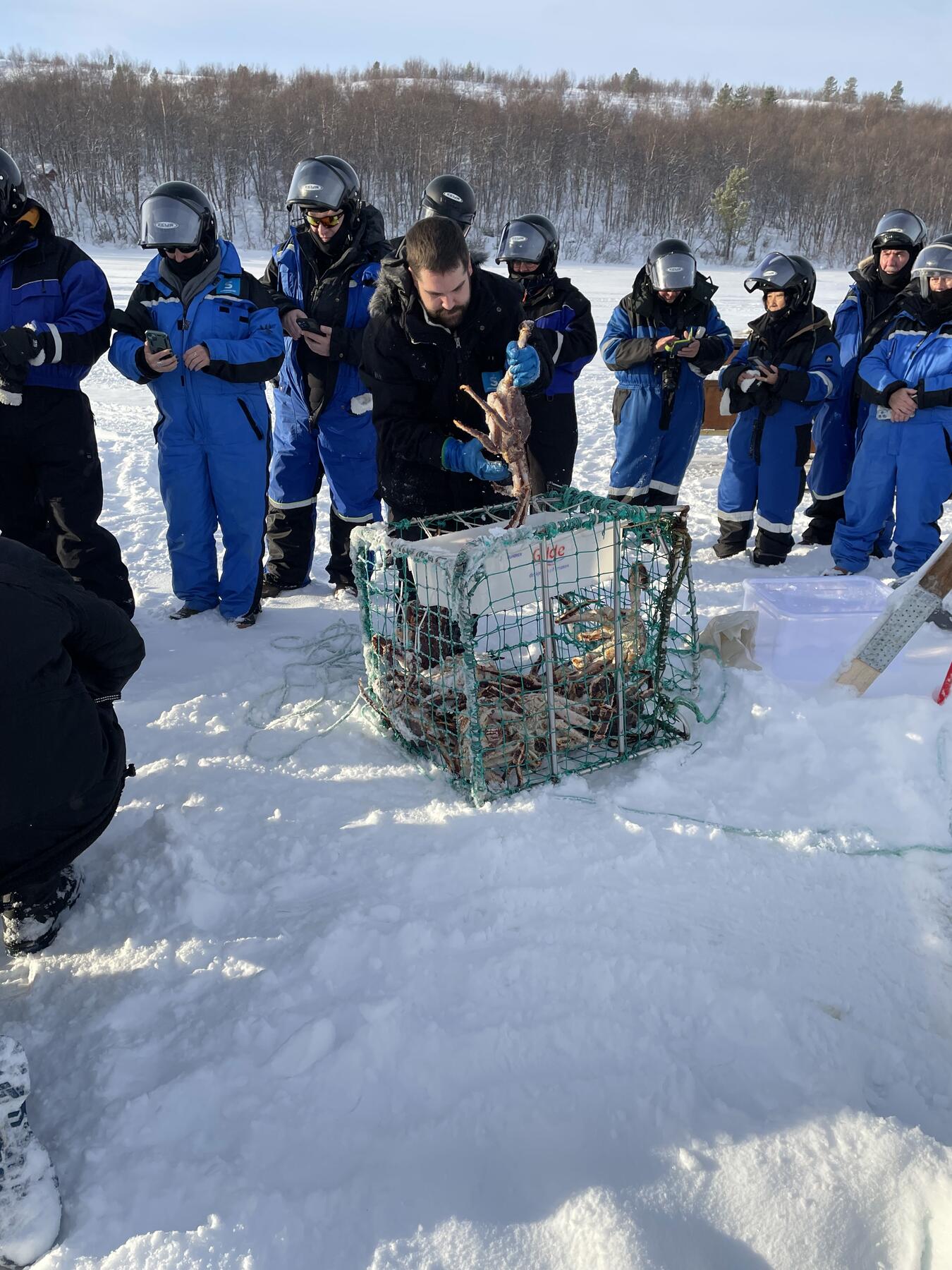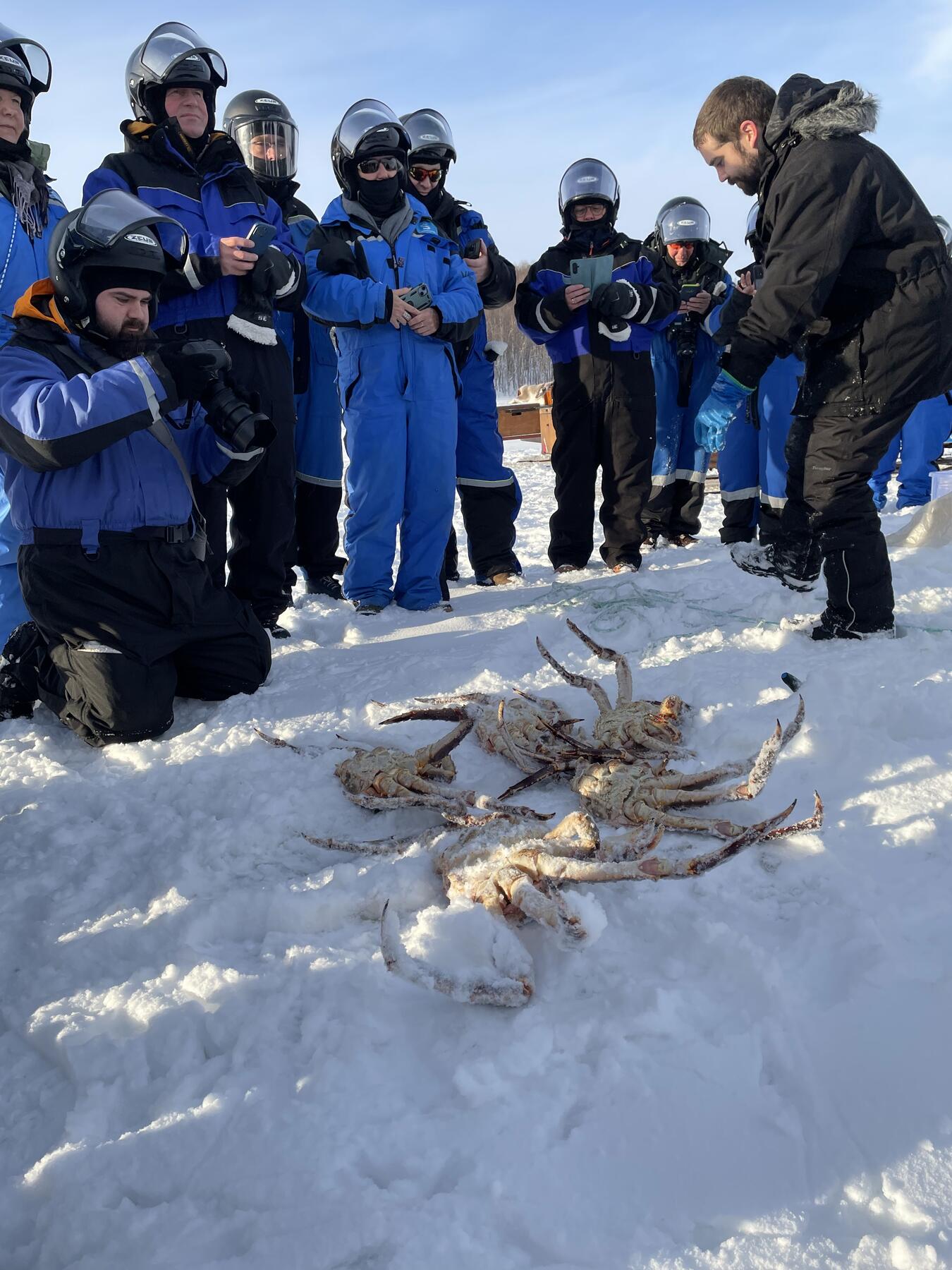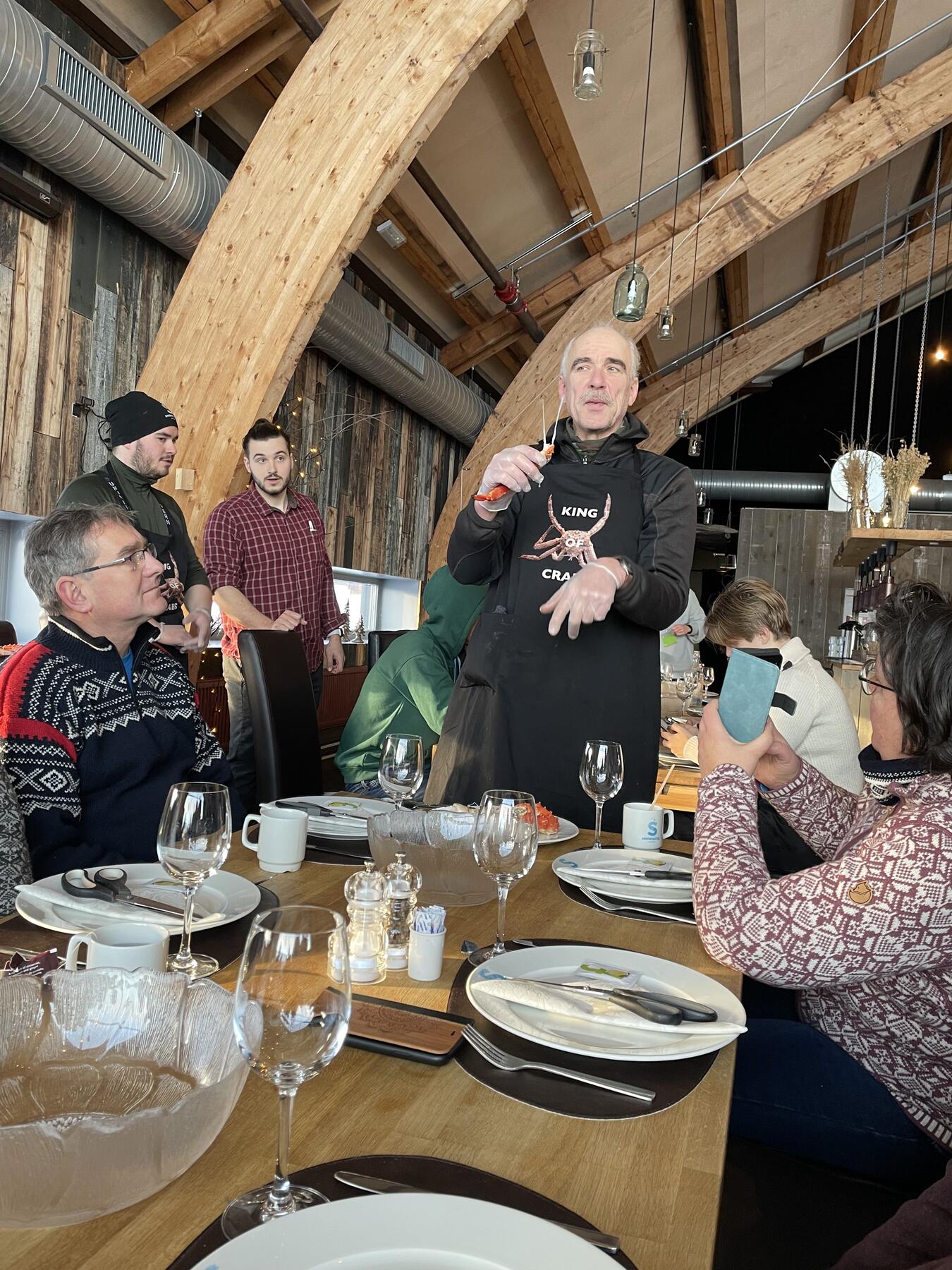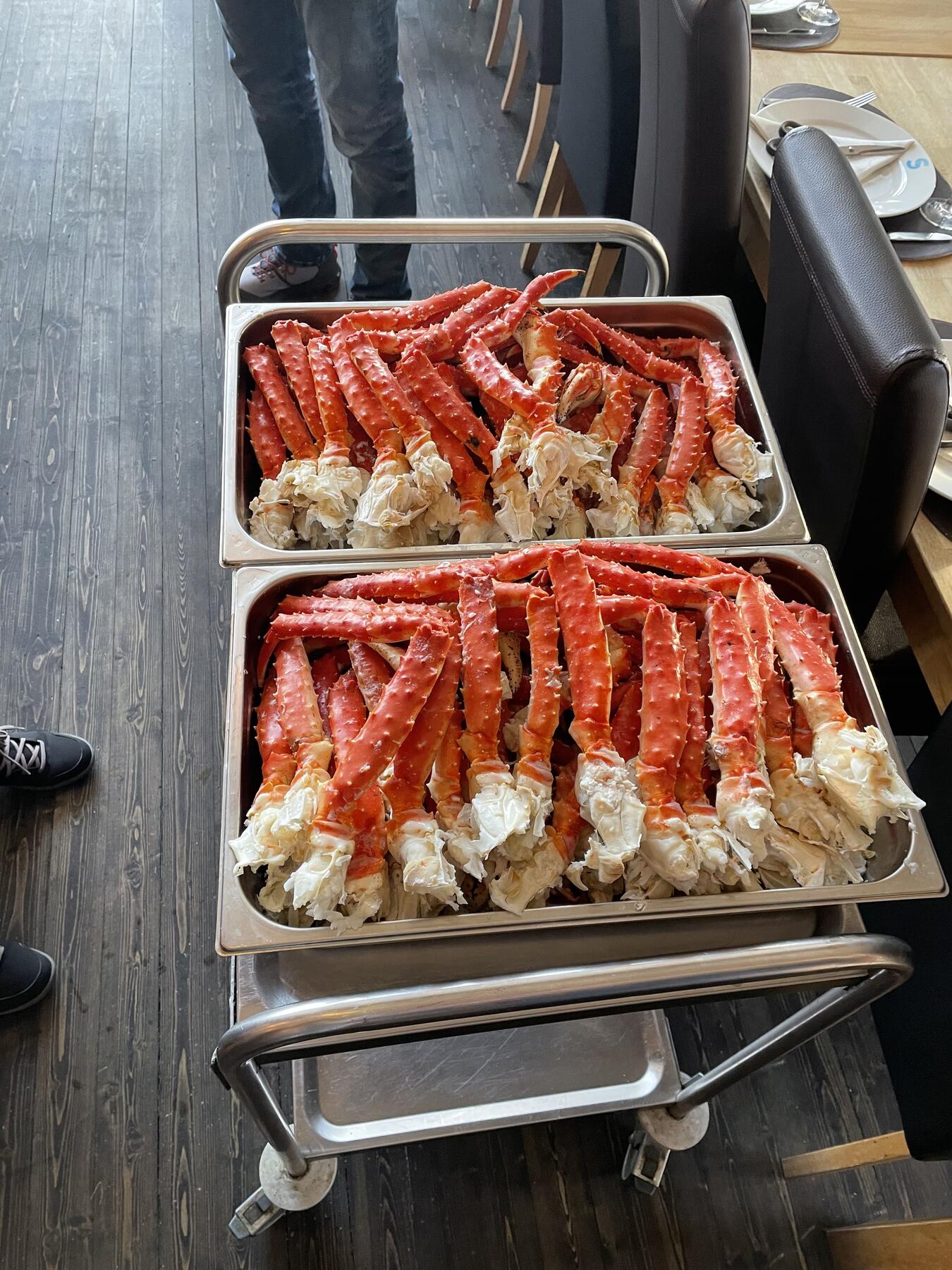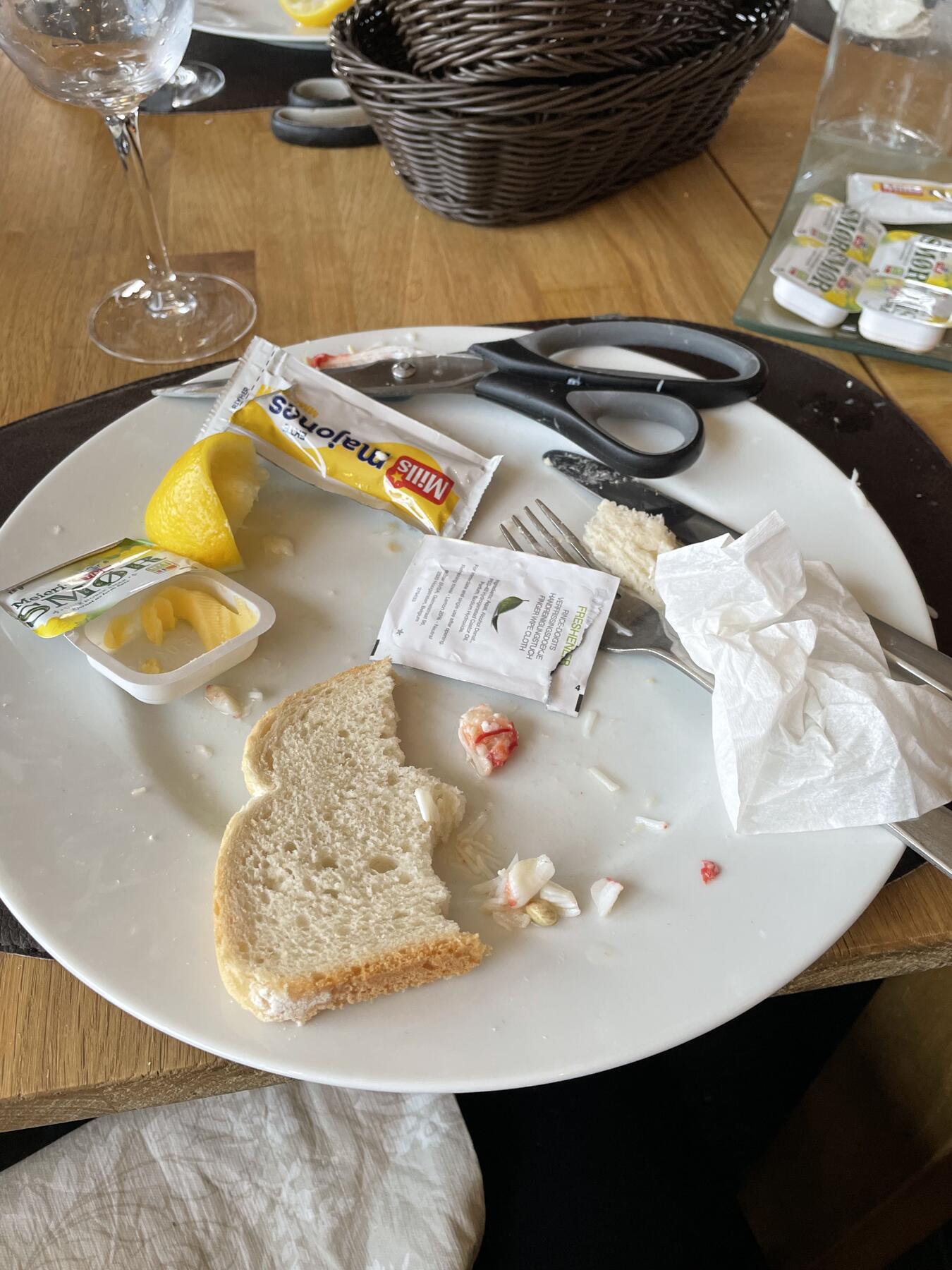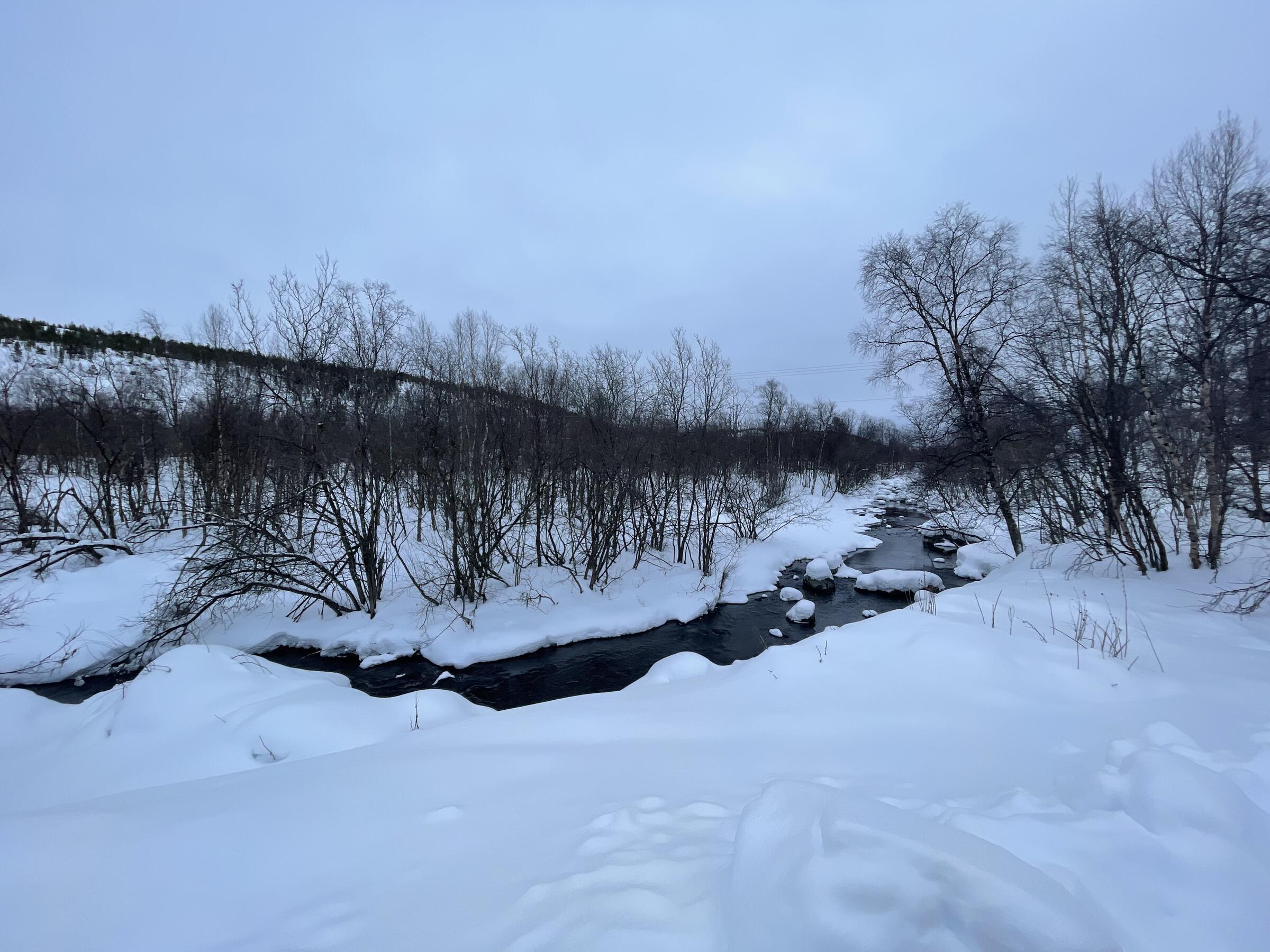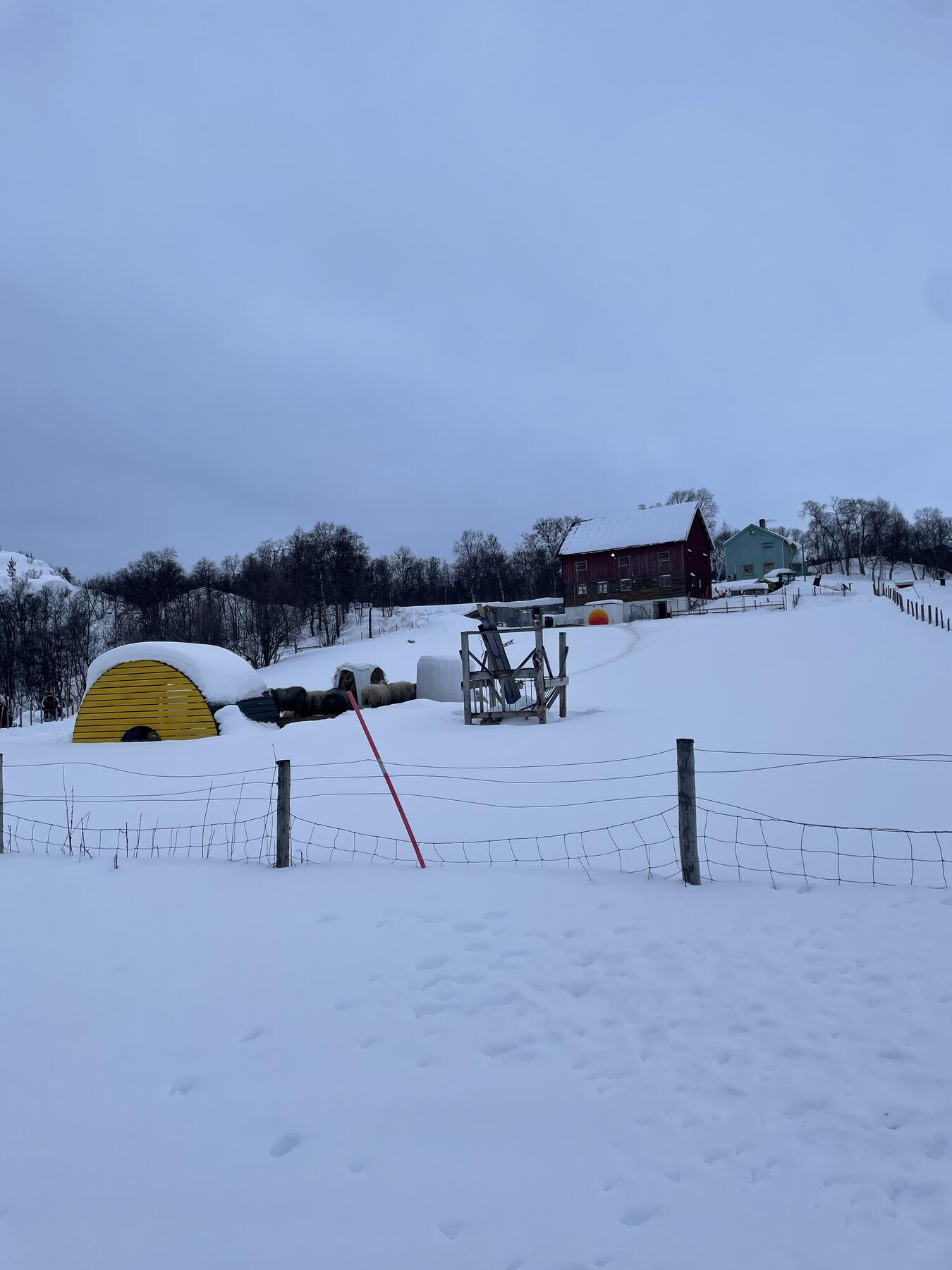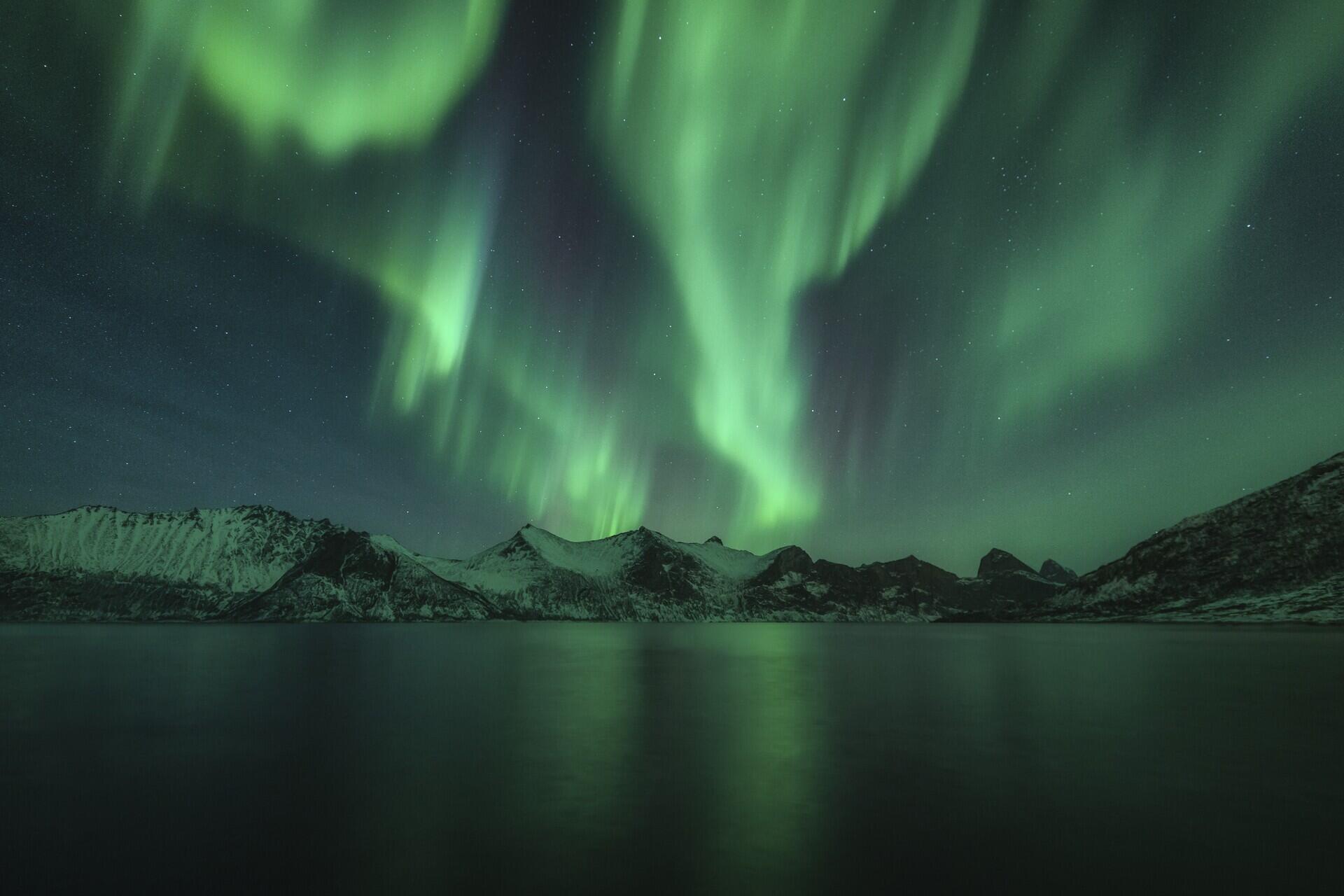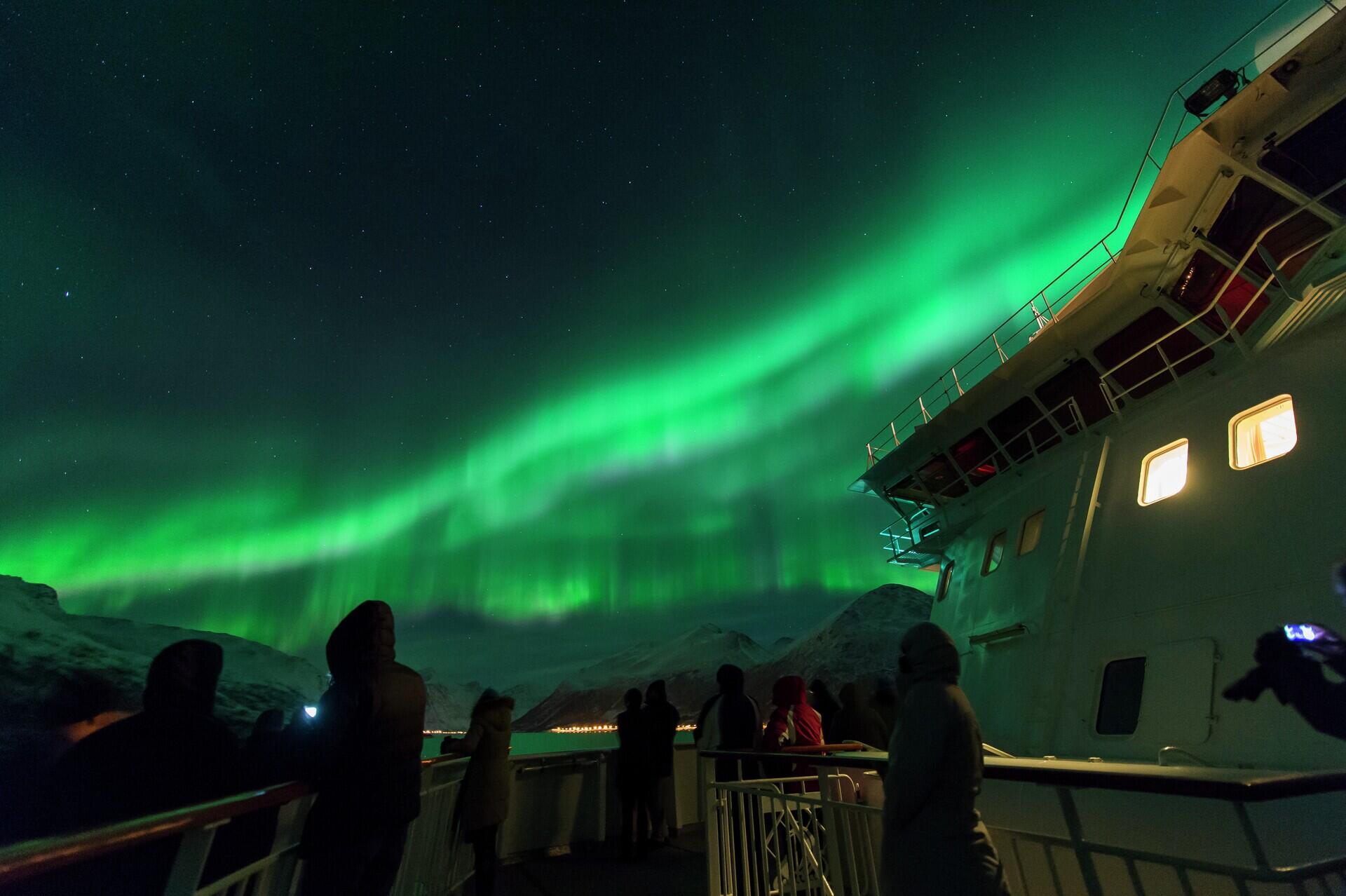Do the things that scare you.
When I started reading suggested packing lists for a February cruise trip through northern Norway, I nearly lost my mind and canceled. The extra layers of clothing I had expected, but the advice on what apparel to bring–everything from wool underwear to balaclavas–made my feelings of unease escalate to heart palpitations.
Exposure therapy is the psychological treatment of gradually introducing and confronting the things you fear to dissipate the anxiety and break the avoidance of the fear. The pacing is important–usually, the gradual progression of exposure to the most severe of fears matters. But then again, there’s also flooding: an intensive type of exposure therapy in which you must face your fear at a maximum level of intensity for an extended amount of time. At its worst, flooding can cause trauma and even hospitalization. On the upside, a patient can conquer fears in a much more time- and cost-effective way.
I’d be in Norway for 6 days. I didn’t know it yet, but I was about to be on my own personal Fear Factor.
Fear: Freezing to Death
You see, I’m a huge baby about the cold. The cold is painful and exhausting. It makes me tense and generally bummed out. And don’t even get me started on the absolute havoc it wreaks on my skin. Snow, an extension of the cold, is automatically terrible. It’s pretty for like 5 seconds when it falls, and then it becomes dangerous icy roads and dirty slush piles. Winter Wonderland is an absolute farce.
Recommended Fodor’s Video
I suppose being cold isn’t a precise fear, but the dread that stems from knowing I’ll be facing extreme temperatures sends adrenaline through my veins. I haven’t done a lot of exposure therapy myself, and the only way I know how to beat back the scary is with preparedness. Here are some things I brought along to self-soothe my frozen fears:
– Waterproof, knee-high snow boots
– A shin-length puffy down coat
– 75 packs of hand warmers
– A flask
– Wool gloves and padded mittens (to be worn together)
– Fleece-lined leggings and ski pants
– Tire chains
– Wool socks, scarf, hat
– Sweaters and thermal underwear
– A sense of futility
– Extra hydrating lotion and chapstick
– Xanax
I double-checked my list as I packed and it really felt like I was ready. Preparing for the cold was, as Ralphie from A Christmas Story says, “like getting ready for deep-sea diving,” and with my layers on, I looked like “a tick about to pop.” Cute!
Alas, I was already taking Xanax. I hoped I was ready.
Fear: Seasickness
Even though I was worried about the cold, I knew there’d be relief from the frigid outdoors in saunas, the Scandinavian Sleep Method (separate duvets, no top sheet), and copious glasses of red wine. I’d be able to physically remove myself from the bitter temperatures. But what about when you’re crossing the choppy waters of the Barents Sea in accommodations that sway and you’re a long-time sufferer of motion sickness? Where might I be escaping from that?
Forget all the Dramamine, ginger chews, patches, and wristbands–for some people, if you experience seasickness, you know there’s no stopping it. I am some people. So why on earth was I boarding this cruise ship?
Well, more than just a cruise ship actually. Hurtigruten sailing line isn’t just a floating hotel: it’s Norway’s Coastal Express, former cargo and postal service, and current everyday ferry service for Norwegians to get from one harbor to another. The ships run a daily scheduled service with routes from Bergen to Kirkenes. Hurtigruten, which means “the fast route,” is most widely used as a serene and scenic way for tourists to experience the most northern parts of Norway and chase the Northern Lights. With its mixed-use facilities and laid-back vibe (with capacities around 500 passengers), life aboard the MS Nordlys feels positively village-like rather than mega-city-esque. And because the working ship never sails too far from the coast, the lack of giant swells in the open sea kept the rocking reasonable.
It doesn’t hurt that Hurtigruten is determined to distract queasy passengers with subdued luxury and authentic charm. The ferry service/cruise line boasts adorable amenities that huge cruise liners can’t provide: personable service, sustainability ethos, an emphasis on culture and science (including lectures on everything from astronomy to climate, local history, and wildlife), and gourmet dining and wining experiences.
My seasickness was offset by my delight at the feeling of old-timey expedition sailing rather than a floating mall and entertainment center. Plus the most adorable weird touches that made the sailing so pleasant: homemade waffles at the cafe with Norwegian “brown cheese” ice cream; cozy Arctic astronomy lessons in the lecture hall; exclusive, sea-aged sparkling wine tasting (over 1,700 bottles that have been aged in a fjord are now available for guests to consume). It all feels wonderfully Scandinavian somehow: refined yet quaint, sophisticated yet understated.
And what of my seasickness? I was instructed to watch the stillness of the horizon. Coastal Norway on the port side, looming black mountains blanketed with fluorescently bright snow, tiny houses, and cabins that twinkled against the dusky skies. Wrapped up in blankets and booze, I parked myself by one of my Expedition Suite’s two ceiling-to-floor windows and sipped my singular sea-aged bubbly. Turns out alcohol plus Dramamine makes one mellow. Anxiety alleviated!
Fear: Sea Monsters With No Predators
Here’s another fear of mine: Monsters! Something about creatures with exoskeletons creeps me way out. Why are these idiots wearing their bones as armor? And why must they have so many legs? Animals with too many legs are erratic and scurry in a way that’s positively hair-raising. Insects, spiders, crustaceans, and other unsettling critters aren’t exactly the cuddly wildlife I’m interested in viewing.
Shellfish does have one redeemable quality in that it is quite delicious! If I can just ignore the fact that I’m eating something with literal pinchers for hands, I can manage to enjoy a seafood dinner (the secret is butter). But I’m also not one to pick my lobster from the tank. Just bring it on the plate, please (extra lemon). Norway has taken its seafood and fish cuisine to levels not always experienced in the warmer oceans–with seafood that can withstand the coldest, darkest waters.
And in that darkness, a horror grows.
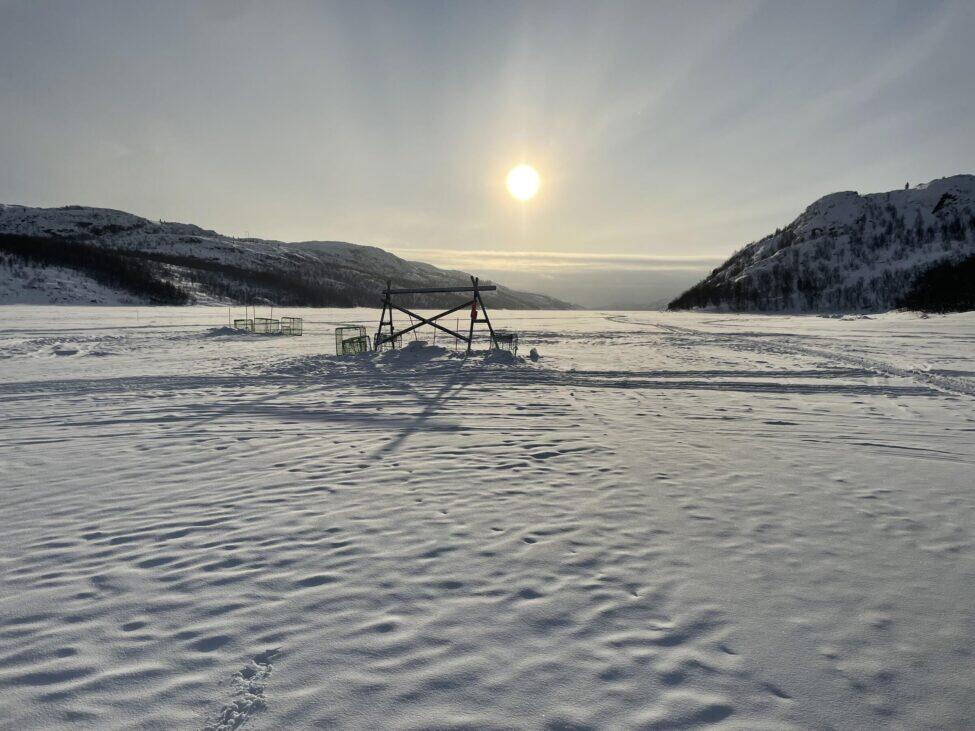
Take King Crabs, which we hunted on a “safari” expedition in Kirkenes, a Norwegian town which sits right on the border of Russia (organized by Snowhotel Kirkenes, our local accommodations where guests can stay in rooms made completely of snow and ice). Just a sleigh ride over to the nearest fjord, where crab traps had been set up to catch the invasive ocean species that can crawl up to 8 miles a day. Since the crabs are an invasive species (nicknamed “Stalin’s Red Army, ” the crustaceans were introduced to the Murman coast in the 1960s by Russian scientists attempting to establish a new fishery industry) with no predators (classic fiendish characteristic), the Norwegian fishing authorities aim to stymie migration further west and south along the coast.
The traps were hoisted from the sea and the crabs were massive. These decapods can grow to be 2 meters long (that’s nearly 6 feet) and can regenerate limbs. A crusty fisherman pulled out a few from the traps and even showed us how to butcher the shellfish humanely–a strange feat considering that King Crabs have no brain or central nervous system. How…what? (The answer is its ganglia, or how invertebrates’ systems function and respond. Extreme alien vibes.) Try to process this fact as you witness the crab’s blue blood draining from their brainless bodies all over the white snow.
It’s a real-life horror show. But after bearing witness to the slaying of nightmare creatures with too many legs and no brain or predators, steam up their giant monster legs with salt ‘til they’re rosy and red and offer them up to hungry-albeit-traumatized tourists. If you are going to slay a dragon, may I recommend that you dip it in butter?
Fear: decimated/delicious.
Fear: Vehicular Manslaughter (plus, Climate Change!)
“This is how I die,” I whispered into my full-face helmet while trail riding across the frozen fjord on a snowmobile at 17 kilometers per hour (about 10 mph). It was the first thing I said aloud inside my cavernous headgear, surprised by how clearly I could hear myself despite the muffled rumble of the snowmobile engine. It was my first time on a recreational winter go-cart-ish vehicle, and I couldn’t believe I didn’t have to take a test to drive it (another excursion organized by the exceptionally unflappable staff at Snowhotel Kirkenes).
After a practice run that included driving a straightaway and then cutting a wide circle for about five rounds at could-run-faster-than-this speed, our group of riders was deemed ready for the open fjord. I did not feel ready. Have you ever driven a car that doesn’t have power steering? When you try to turn, you have to use all your strength to pull the wheel in the direction you’re turning. That’s a bit what it’s like to snowmobile. Except on ice. Sans vehicle enclosure. Oh, and your hands are stuffed into oven mitts (for the warmth!).
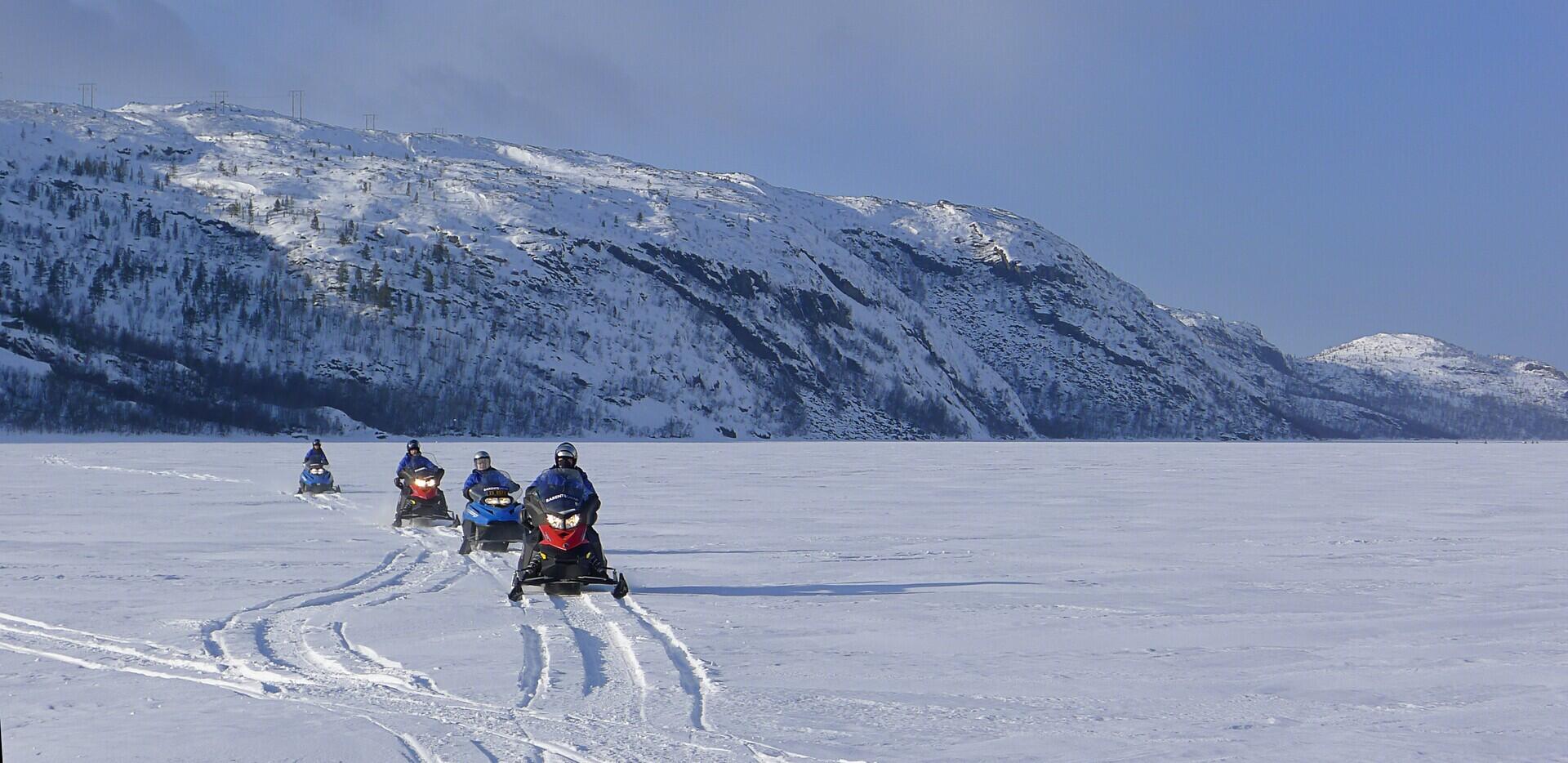
“Tell my family I love them,” I told the other riders in my fleet. I didn’t think I was being dramatic. Snowmobiling seemed like a death trap disguised as a way to “recreate” in the snow. It is everyone’s worst fear when driving in cold climates: hydroplaning. But one of the best ways to get around snowy trails is on a snowmobile, and for some, it’s considered “fun.”
To say I lagged behind the revelry is an understatement. The other snowmobilers in my group zoomed alongside me and zipped back and forth, cutting switchbacks in the snow like figure skaters on ice. I had to admit that the hinterland was pretty amazing. The frozen fjord serves as a pristine valley between massively jagged mountains and wintered forests, the occasional brightly painted cabin or barn dotting the horizon. A flock of sheep, cuddled up together in a snowy pasture, bleated at me as I passed. It was all very bucolic and mostly placid–until, as I expected, the snowmobiles tried to kill us. (Of course I mean this indirectly, but what is manslaughter but without malice?)
We regrouped on a slushy stretch of the fjord that gave us a great view of some of the snowmelt cutting through the trail. But because of our proximity to the free-flowing water and our cumulative trodden path, the snowmobiles floundered. Flooring the gas just left us spinning our wheels (or whatever the equivalent of wheels is for a waverunner on skis). Most of us were able to shuffle over to more solid ground. But our guide did eventually need to rescue one rider stuck too deep in the slushy grooves.
“What’s with the snowmelt?” we asked each other, bewildered. Was this not winter in Scandinavia? Did we have to worry about falling through weak ice?
Turns out that in 2024, yes, you do. Because climate change is readily showcasing its effects in the most extreme of weather conditions, Norway is subject to some very obvious consequences, including snow that shouldn’t be melting.
“Go fast through the slushy parts,” the guide instructed us. “Or you’ll sink.”
This was not how I expected to get through this joyride. I felt no need for speed. But I also did not want to be sucked into a prematurely melting ice floe because humans can’t stop their insatiable need to burn fossil fuels.
I, too, could burn that fossil fuel.
At my top speed of 62 kilometers per hour (about 38mph), I figured out how to steady my nerves: singing Christmas carols into my helmet at the top of my lungs. One thing I realized about dashing through the snow(melt): it really warms you up!
I was basically conquering phobias left and right.
Fear: FOMO and the Northern Lights
Chasing the Northern Lights is an exercise in patience and perseverance–and pain. I caught a glimpse of the Northern Lights for the first time in southern Canada in 2003, and I immediately discounted the experience. This was mostly due to my own ignorance: From my vista within the light pollution of a city, I had no idea what exactly I was looking at or for, and the measly Aurora didn’t particularly wow me. These were just some dim white flashes in the sky, and I thought, naaaahhhh. This doesn’t count. Where’s my photo of wintery tundra against the glowing green lights? Where are the waves of purple luminescence undulating against the night sky? I’m definitely going to do right next time, see these Aurora where they really want to shine. Fast forward 20 years and I was still chasing. But Hurtigruten promised me a catch.
That’s basically the whole reason I accepted this terrifying journey through my own personal circles of hell. The 2024-2025 winters are part of the “Solar Maximum” of the Solar Cycle, an 11-year period of solar activity driven by the sun’s magnetic field and indicated by the frequency and intensity of visible sunspots on the surface. Around this time, we can expect more intense solar activity and, it follows, more spectacular auroral displays.
But I’m not risking exposure therapy to all things nightmare just based on natural phenomena probably showing up. Hurtigruten really sweetens the pot with their Northern Lights Promise–if the lights don’t appear on your trip (select voyages), you’ll get a six-day southbound or seven-day northbound Original Coastal Express Classic Voyage free of charge (Ts&Cs). That’s triple the potential opportunities to see these elusive sky sparkles: because of sailing beneath the “Auroral Zone” (basically, the Arctic Circle) and during the period of time you are most likely to see them and on a mobile observatory that seeks out perfect conditions and dodges cloud cover. And if you can’t hack it out on the observation deck, you can opt to keep your room’s phone notifications on and the crew will literally wake you up in your sleep so you can rush to the window to catch a show. It seemed positively moronic not to take the chance.
Turns out, I never even had to enable my notifications. On our first night on the ship, passengers stood both awed and aloof (for some riders, this was just a regular Tuesday) by the wintry night sky swathed in milky lights. The onboard astronomer pointed out constellations and the moon dog halo while doling out tips for finding, following, and photographing the ethereal lights. An hour later, I was ready to go to bed–even though the auroras weren’t.
Norway wasn’t so scary after all–or perhaps I was braver than expected. I had conquered my frozen phobias and my FOMO. All it took was a bona fide guarantee it would be worth it.
And it was!
